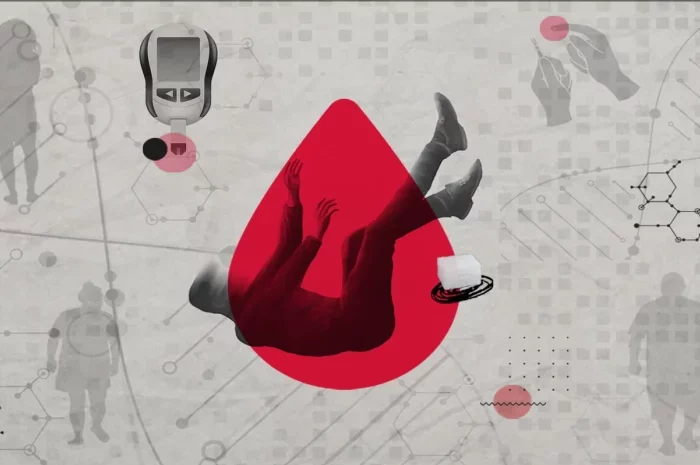Type 1 diabetes (T1D) is a chronic autoimmune condition in which the pancreas produces little to no insulin, a hormone essential for regulating blood glucose levels. Unlike type 2 diabetes, which is often associated with insulin resistance and lifestyle factors, type 1 diabetes is typically diagnosed in children, adolescents, or young adults and is primarily driven by an autoimmune attack on insulin-producing beta cells in the pancreas. Managing type 1 diabetes involves a multifaceted approach that includes meticulous blood glucose monitoring, insulin therapy, diet and lifestyle adjustments, and ongoing medical care. This article provides a comprehensive overview of what individuals with type 1 diabetes can do to effectively manage their condition and improve their quality of life.
Understanding Type 1 Diabetes
Type 1 diabetes is characterized by the destruction of pancreatic beta cells, leading to a complete or near-complete lack of insulin production. Insulin is crucial for enabling glucose to enter cells from the bloodstream, where it is used for energy. Without sufficient insulin, glucose accumulates in the blood, resulting in hyperglycemia (high blood sugar levels). This condition requires lifelong management to prevent complications and maintain overall health.
Key Aspects of Type 1 Diabetes Management
Blood Glucose Monitoring
Regular monitoring of blood glucose levels is a cornerstone of type 1 diabetes management. Accurate monitoring helps individuals make informed decisions about insulin dosing, diet, and physical activity. Several methods are available for blood glucose monitoring:
Blood Glucose Meters: Traditional blood glucose meters use a small blood sample, typically obtained via a fingertip prick, to measure blood glucose levels. Results are usually available within a few seconds and provide real-time information on blood sugar levels.
Continuous Glucose Monitors (CGMs): CGMs are devices that provide continuous, real-time glucose readings through a sensor placed under the skin. These devices offer a comprehensive view of glucose trends and can alert users to high or low blood sugar levels.
Flash Glucose Monitors: Similar to CGMs, flash glucose monitors require a sensor worn on the skin. Users can scan the sensor with a reader or smartphone to obtain glucose readings. Unlike CGMs, flash monitors do not provide continuous glucose data.
Insulin Therapy
Since individuals with type 1 diabetes produce little to no insulin, insulin therapy is essential for maintaining blood glucose control. There are several types of insulin, each with different onset, peak, and duration times:
Rapid-Acting Insulin: This type of insulin acts quickly to lower blood glucose levels after meals. Examples include insulin lispro, insulin aspart, and insulin glulisine.
Short-Acting Insulin: Short-acting insulin is typically administered before meals to manage postprandial (post-meal) blood glucose spikes. Regular insulin is an example of short-acting insulin.
Intermediate-Acting Insulin: This insulin type has a slower onset and longer duration of action. NPH (neutral protamine Hagedorn) insulin is a common intermediate-acting insulin.
Long-Acting Insulin: Long-acting insulin provides a steady release of insulin over an extended period, helping to maintain baseline glucose levels. Examples include insulin glargine, insulin detemir, and insulin degludec.
Insulin Pumps: Insulin pumps are devices worn externally that deliver a continuous supply of insulin through a small catheter inserted under the skin. Pumps can be programmed to deliver basal insulin continuously and bolus doses for meals.
Carbohydrate Counting and Diet Management
Managing carbohydrate intake is crucial for individuals with type 1 diabetes. Carbohydrates have the most significant impact on blood glucose levels, so counting carbohydrates helps determine the appropriate insulin dose. Key dietary considerations include:
Carbohydrate Counting: Counting carbohydrates involves tracking the amount of carbohydrates consumed in each meal and snack. This information helps individuals adjust their insulin doses accordingly.
Balanced Diet: A well-balanced diet that includes a variety of foods—such as vegetables, lean proteins, whole grains, and healthy fats—can help stabilize blood sugar levels and promote overall health.
Glycemic Index: The glycemic index (GI) measures how quickly a carbohydrate-containing food raises blood glucose levels. Foods with a low GI are absorbed more slowly and have a more gradual effect on blood sugar.
Physical Activity
Regular physical activity is beneficial for managing type 1 diabetes as it can improve insulin sensitivity, lower blood glucose levels, and support overall health. However, exercise can also affect blood sugar levels, so careful planning is essential:
Pre-Exercise Blood Glucose Check: Monitoring blood glucose levels before exercise helps determine if adjustments to insulin or carbohydrate intake are needed.
Monitoring During and After Exercise: Keeping track of blood glucose levels during and after exercise helps prevent hypo- or hyperglycemia (low or high blood sugar levels) and ensures that appropriate actions are taken.
Adjusting Insulin and Carbohydrate Intake: Depending on the type, intensity, and duration of exercise, adjustments to insulin dosages or carbohydrate consumption may be required to maintain stable blood glucose levels.
Managing Stress and Emotional Health
Managing type 1 diabetes can be stressful, and emotional well-being plays a significant role in overall diabetes management:
Stress Management: Chronic stress can impact blood glucose levels and insulin sensitivity. Techniques such as mindfulness, meditation, deep breathing exercises, and regular physical activity can help manage stress.
Support Systems: Building a support network of family, friends, and healthcare professionals can provide emotional support and practical assistance in managing diabetes.
Mental Health Care: Regular mental health care, including counseling or therapy, can help individuals cope with the emotional challenges of living with type 1 diabetes.
Education and Self-Management
Education about diabetes management is crucial for individuals with type 1 diabetes. Understanding how to manage blood glucose levels, recognize symptoms of high or low blood sugar, and make informed decisions about treatment options empowers individuals to take control of their health:
Diabetes Education Programs: Participating in diabetes education programs or workshops can provide valuable knowledge and skills for effective self-management.
Continuous Learning: Staying informed about the latest advancements in diabetes care, new technologies, and emerging research can enhance management strategies and improve quality of life.
Addressing Common Concerns
Hypoglycemia (Low Blood Sugar)
Hypoglycemia occurs when blood glucose levels drop below normal, typically below 70 mg/dL. Symptoms may include shakiness, sweating, dizziness, confusion, and irritability. Severe hypoglycemia can lead to loss of consciousness or seizures. To manage hypoglycemia:
Immediate Treatment: Consume fast-acting carbohydrates, such as glucose tablets, fruit juice, or regular soda, to quickly raise blood sugar levels.
Follow-Up Monitoring: Recheck blood glucose levels after treatment to ensure that they have returned to a safe range.
Prevention: Regular monitoring, careful insulin dosing, and consistent carbohydrate intake can help prevent hypoglycemic episodes.
Hyperglycemia (High Blood Sugar)
Hyperglycemia occurs when blood glucose levels exceed normal ranges, typically above 180 mg/dL. Symptoms may include increased thirst, frequent urination, fatigue, and blurred vision. Persistent hyperglycemia can lead to complications. To manage hyperglycemia:
Adjust Insulin Dosage: Increase insulin doses as directed by a healthcare provider to address elevated blood glucose levels.
Hydration: Drink plenty of water to help flush excess glucose from the body.
Medical Consultation: Consult a healthcare provider if high blood sugar persists or if there are signs of diabetic ketoacidosis (DKA), a serious condition that requires urgent medical attention.
Long-Term Complications
Managing type 1 diabetes effectively reduces the risk of long-term complications, such as:
Cardiovascular Disease: High blood sugar levels can damage blood vessels and increase the risk of heart disease and stroke.
Neuropathy: Prolonged hyperglycemia can cause nerve damage, leading to symptoms such as numbness, tingling, or pain in the extremities.
Retinopathy: Damage to the blood vessels in the retina can lead to vision problems or blindness.
Nephropathy: Kidney damage from high blood sugar can result in chronic kidney disease or kidney failure.
Regular check-ups, comprehensive diabetes care, and adherence to treatment plans are essential for preventing and managing these complications.
See also: What Type of Diabetes is Genetic?
Conclusion
Living with type 1 diabetes requires ongoing management and dedication to maintaining blood glucose levels within target ranges. By understanding the various aspects of diabetes management, including blood glucose monitoring, insulin therapy, diet and physical activity, stress management, and education, individuals with type 1 diabetes can take control of their condition and enhance their quality of life.
Adopting a proactive approach to managing type 1 diabetes involves making informed decisions about treatment, staying vigilant about blood sugar levels, and seeking support when needed. With effective management strategies and a comprehensive care plan, individuals with type 1 diabetes can achieve optimal health outcomes and lead fulfilling lives.
Related topics:
What Are the Signs and Symptoms of Juvenile Diabetes?
























